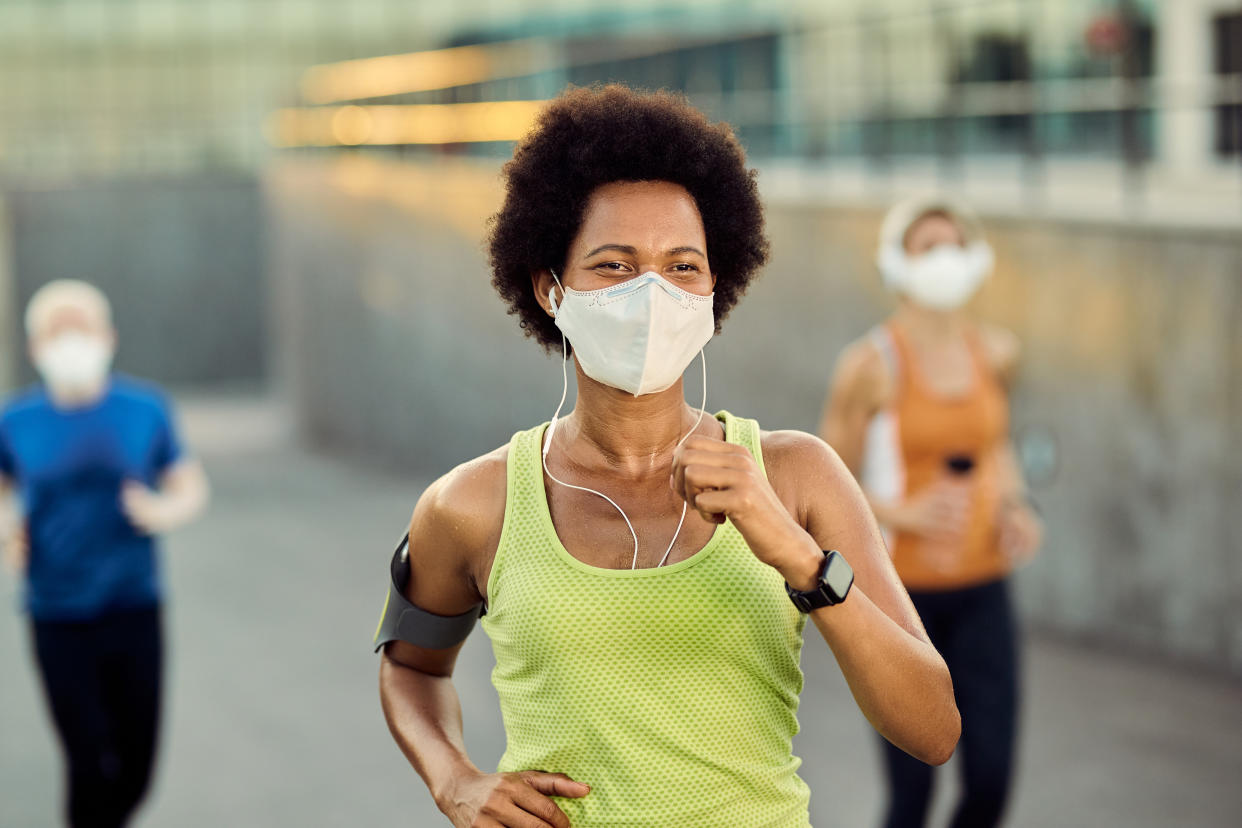You can safely wear a mask while jogging, study shows

Earlier this year, the World Health Organization warned that people should not wear masks while exercising, saying that they “may reduce the ability to breathe comfortably”.
But a new scientific study has shown that there’s little evidence that masks make it harder to get the oxygen needed during exercise.
The researchers say that there’s little evidence that masks alter the flow of oxygen, or cause ‘dyspnea’, shortness of breath or difficulty breathing.
Lead author Susan Hopkins, professor of medicine and radiology at University of California, San Diego School of Medicine, said, “There might be a perceived greater effort with activity, but the effects of wearing a mask on the work of breathing, on gases like oxygen and CO2 in blood or other physiological parameters are small, often too small to be detected.”
Watch: How will a vaccine be administered? What about adverse reactions?
Read more: Do not wear a mask while exercising, says WHO
“There’s also no evidence to support any differences by sex or age in physiological responses to exercise while wearing a face mask.”
The research was published in Annals of the American Thoracic Society.
Hopkins says that while wearing a mask may feel like it’s restricting breathing, it actually doesn’t impair your ability to breathe in oxygen.
Hopkins said, “Wearing a face mask can be uncomfortable. There can be tiny increases in breathing resistance. You may re-inhale warmer, slightly enriched CO2 air. And if you’re exercising, the mask can cause your face to become hot and sweaty.
“But these are sensory perceptions. They do not impact cardiopulmonary function in healthy people.
“So while dyspnea might be increased with a mask, you have to weigh that against the reduced risk of contracting COVID-19, knowing that the physiology is essentially unchanged.”
Read more: Why spiders tend to invade houses in autumn
The only people who may want to avoid masks while exercising, says Hopkins, are people with severe cardiopulmonary disease.
In those cases, any added resistance to breathing or minor changes in blood gases could prompt dyspnea great enough to affect exercise capacity.
Hopkins said, “In such cases, these individuals might feel too uncomfortable to exercise, and that should be discussed with their doctor.
“However, the fact that these individuals are at great risk should they contract COVID-19 must also be considered.”
The researchers reviewed all known scientific literature examining face masks and their effects when combined with exercise.
The studies assessed multiple factors, such as work of breathing (the quantified energy expended to inhale and exhale), arterial blood gases, effects on muscle blood flow and fatigue, cardiac function and flow of blood to the brain.
For healthy persons, the effects of wearing a mask on these physiological markers were minimal, no matter what type of mask was worn or the degree of exercise.
Watch: Top 4 ways to make fitness sessions fun

 Yahoo News
Yahoo News 

